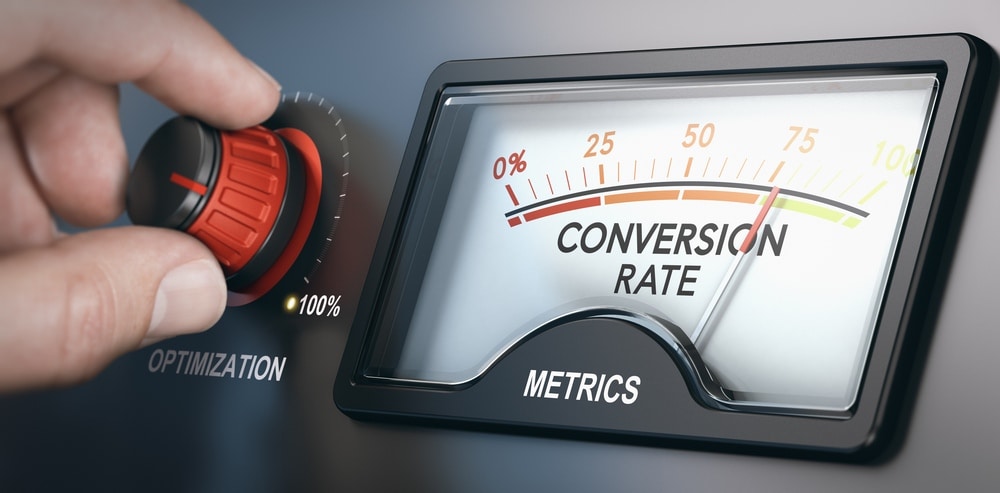In the age of information and digital commerce, having a strong online presence isn’t merely an advantage, it’s an absolute necessity. When it comes to succeeding in the e-commerce landscape, it’s not enough just to attract traffic to your website. The real success lies in converting that traffic into actual sales. This process of optimizing your website to increase the percentage of visitors who complete your desired action is known as Conversion Rate Optimization (CRO).
In essence, CRO is all about understanding how your visitors navigate through your site, what actions they take, and what’s stopping them from completing your goals. Implementing a successful CRO strategy is key to the growth of any online business, as it can improve ROI, increase customer lifetime value, and lower customer acquisition costs. This beginner CRO guide will provide you with 6 powerful tips to help you increase your website’s conversion and grow sales, regardless of the size or nature of your business.
1. Understand Your Users
Having a deep understanding of your users is essential to increasing conversions. This involves gaining insights into their demographics, interests, online behaviors, and the challenges they face. You can gather this data through multiple methods:
- User Surveys: By conducting surveys, you can ask users directly about their needs and preferences. For instance, you might ask about what features they value most in your product, or what factors are holding them back from making a purchase.
- User Testing: This method involves observing users as they interact with your website. User testing can uncover usability issues that might be hindering conversions.
- Analytics Tools: Tools like Google Analytics can provide a wealth of data about your users. For example, you can learn about the most popular paths users take through your site, the pages where they’re most likely to exit, and more.
By analyzing this data, you can identify common patterns and trends, which can inform your CRO strategies.

2. Optimize Your Call-to-Actions (CTAs)
A Call-to-Action (CTA) is a prompt on your website that tells users what action to take. An effective CTA can significantly increase your conversion rate. Here’s how you can optimize your CTAs:
- Visibility: Make your CTAs stand out on the page. They should be easy to find and distinguishable from the rest of the content on the page.
- Compelling Language: Use action-oriented language that creates a sense of urgency and entices users to take action. For example, instead of a generic “Submit” button, try something more engaging like “Get My Free Ebook Now”.
- Test Different Variations: Different audiences respond to different CTAs. Try different variations of CTA text, colors, and placement, and use A/B testing to determine which performs best.
3. Improve Your Website’s Loading Speed
Web users are increasingly impatient, and even a small delay in page load time can cause them to abandon your site. Here’s how you can improve your site’s speed:
- Optimize Images: Large, unoptimized images can significantly slow down your site. Use tools to compress images without losing quality.
- Minimize HTTP Requests: Every piece of your website (images, scripts, CSS files) requires a different HTTP request, and more requests mean slower load times. Reduce these by simplifying your site’s design and combining files where possible.
- Use a Content Delivery Network (CDN): A CDN stores copies of your site at various points around a network to improve site speed for users regardless of their location.
4. A/B Test Regularly
A/B testing, also known as split testing, is a method of comparing two versions of a webpage to see which one performs better. Here’s how to effectively implement A/B testing:
- Test One Element at a Time: To accurately determine what is causing differences in performance, only test one element at a time. This could be a headline, image, CTA, or anything else on your page.
- Use a Significant Sample Size: To ensure your results are accurate and reliable, you need to test on a large enough sample of users.
- Give the Test Enough Time: Don’t end your test too soon. It’s best to wait until you have enough data to make a statistically significant decision.

5. Create High-Quality Content
High-quality content attracts, engages, and retains users, ultimately leading to higher conversion rates. Here’s how you can create high-quality content:
- Know Your Audience: Understanding your audience is key to creating content that resonates with them. Identify their interests, pain points, and common questions, and create content that addresses these areas.
- Use Various Content Formats: Different users prefer different types of content. Try to use a mix of text, images, infographics, videos, and interactive content to engage a wide range of users.
- Optimize for SEO: Use keywords, meta tags, and other SEO techniques to help your content rank higher in search engine results, attracting more traffic to your site.
6. Simplify Your Checkout Process
A complex checkout process can deter users from completing a purchase. Here’s how you can simplify your checkout process:
- Minimize the Number of Steps: The more steps in your checkout process, the more opportunities users have to abandon their purchase. Try to minimize the number of steps required to complete a purchase.
- Offer Guest Checkout: Forcing users to create an account before making a purchase can be a major deterrent. Offer a guest checkout option to simplify the process.
- Provide Multiple Payment Options: Different users prefer different payment methods. Providing multiple options can improve the user experience and increase conversions.
Conclusion
Conversion Rate Optimization is an ongoing journey that requires constant testing and improvement. These six tips provide a great starting point, but the most effective CRO strategies are those that are continuously adjusted and tailored to your unique audience and business needs. By focusing on understanding your users, optimizing CTAs, improving website speed, regularly A/B testing, creating quality content, and simplifying the checkout process, you can significantly increase your website’s conversion and grow your online sales. Remember, the ultimate goal is to provide the best user experience possible, which in turn will make your customers happy and boost your bottom line.
